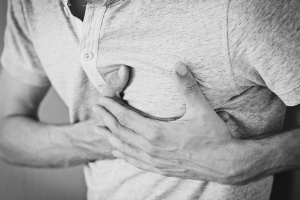
Low plasma/serum selenium concentrations are associated with increased risk of death from heart disease and increased risk of death from all causes. Professor Urban Alehagen and a team of researchers at Linköping University in Sweden have investigated the relationship between low selenium levels and the risk of heart disease.
Selenium supplements suggested for adults with very low Se levels
The Swedish study shows that adults with a serum selenium concentration below 57 micrograms per liter are at significantly higher risk of death from all causes (43% increased risk) and death from heart disease (56% increased risk) [Alehagen 2016].
57 micrograms of selenium per liter of serum. Wow! That’s low.
These significant associations remained solid even after the researchers had adjusted for the effects of possibly modifying factors:
- male gender
- smoking
- ischemic heart disease
- diabetes
- chronic obstructive pulmonary disease
- impaired heart function [Alehagen 2016]
Professor Alehagen suggests that adults with serum selenium levels below 57 micrograms per liter be recommended to take a selenium supplement.
No differences found in cancer mortality rates
Interestingly, the Swedish study did not show a significant difference in cancer mortality rates across the four quartiles of study participants. However, please note that the average serum selenium concentration in all four quartiles compared in the study was quite low:
- Quartile 1: < 57.2 mcg/L
- Quartile 2: 57.2 – 67.1 mcg/L
- Quartile 3: 67.1 – 76.1 mcg/L
- Quartile 4: > 76.1
Remember: The best estimate we have for a protective effect of selenium against prostate cancer is a plasma selenium concentration ranging from 120 to 170 micrograms per liter [Hurst 2012].
It could be that the cancer mortality rates in all four quartiles in the Swedish study do not differ significantly one from another but are all high in comparison to cohorts that maintain serum selenium levels above 120 micrograms per liter.
Why the need for selenium supplementation?
Professor Alehagen explains that the selenium content in the soil and, thus, in foodstuffs around the world varies considerably from region to region. Food habits also vary, meaning that people get more or less selenium in their diets, depending upon where they live.
Selenium is essential for a variety of cellular functions. The trace element selenium is seldom found as a single element in the body. It fulfills its essential biological functions as a component of the amino acid selenocysteine.
Selenocysteine is, then, itself a necessary component of 25 known selenoproteins. Many of these selenoproteins, notably the glutathione peroxidases and the thioredoxin reductases, protect our cells and tissues against the harmful effects of oxidative stress [Alehagen 2016].
Given the regional variations in the uptake of selenium and the importance of adequate serum selenium concentrations for a longer life and a better quality of life, it seems advisable to have one’s serum selenium concentration tested to see how one compares with the Swedish study participants.
How much selenium supplementation?
Professor Fairweather-Tait and colleagues in the United Kingdom have reported the results of a supplementation study of middle-aged healthy British men and women (50 – 64 years of age). The study participants’ average baseline plasma selenium concentration was just above 95 micrograms per liter [Hurst 2010].
- Supplementation with a daily 50-microgram high-selenium yeast tablet for 10 weeks raised the study participants’ plasma selenium concentrations to an average of 118.3 micrograms per liter.
- Supplementation with a daily 100-microgram high-selenium yeast tablet for 10 weeks raised the study participants’ plasma selenium concentrations to an average of 152 micrograms per liter.
Summary of Swedish study of serum selenium levels and mortality
Professor Alehagen’s Swedish study found significantly increased risk of death from heart disease and from all causes in study participants with serum selenium levels below 57.2 micrograms per liter. Other studies have shown similar associations between low serum selenium levels and increased mortality:
- Danish study: A study of more than 3000 males with serum selenium concentrations below 60 micrograms per liter showed an associated increased risk of heart attack [Suadicani 1992].
- Finnish studies: Studies from the 1970s, the period before Finland began fertilizing the soil with selenium, showed an association between low serum selenium levels and increased risk of death from heart disease [Salonen 1982].
- French study: A French study of elderly French study participants reported an association between low plasma selenium concentrations and increased mortality rates [Akbaraly 2005].
Protective effects of selenium supplementation
Selenium in sufficient concentrations has important antioxidant and immune system functions. It is probable that the protective effect of adequate plasma/serum concentrations of selenium is related to the effect of selenoproteins:
- Reducing oxidative stress
- Reducing inflammation
Sources
Akbaraly, N.T., Arnaud, J., Hininger-Favier, I., Gourlet, V., Roussel, A.M. & Berr, C. 92005). Selenium
and mortality in the elderly: results from the EVA study. Clin Chem, 51:2117–2123.
Alehagen, U., Johansson, P., Björnstedt, M., Rosén, A., Post, C., & Aaseth, J. (2016). Relatively high mortality risk in elderly Swedish subjects with low selenium status. European Journal of Clinical Nutrition, 70(1), 91-96. doi:10.1038/ejcn.2015.92
Hurst, R., Hooper, L., Norat, T., Lau, R., Aune, D., Greenwood, D. C., & Fairweather-Tait, S. J. (2012). Selenium and prostate cancer: systematic review and meta-analysis. The American Journal of Clinical Nutrition, 96(1), 111-122.
Hurst, R., Armah, C. N., Dainty, J. R., Hart, D. J., Teucher, B., Goldson, A. J., & Fairweather-Tait, S. J. (2010). Establishing optimal selenium status: results of a randomized, double-blind, placebo-controlled trial. The American Journal of Clinical Nutrition, 91(4), 923-931.
Salonen, J.T., Alfthan, G., Huttunen, J.K., Pikkarainen, J. & Puska, P. (1982). Association between cardiovascular death and myocardial infarction and serum selenium in a matched-pair longitudinal study. Lancet, 2: 175–179.
Suadicani, P., Hein, H.O. & Gyntelberg, F. (1992). Serum selenium concentration and risk of ischaemic heart disease in a prospective cohort study of 3000 males. Atherosclerosis, 96: 33–42.
Disclaimer: The information provided in this review article is not intended as medical advice and should not be construed as such.
